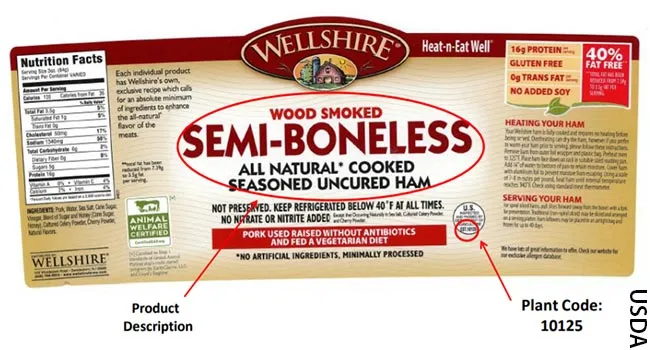Fire Extinguishers That Save Lives and Reduce Risks
Fire extinguishers are vital safety tools, designed to combat fires quickly and efficiently, protecting lives and property in emergencies

Fire safety is something that should never be taken lightly. While we may not always think about fire hazards in our daily lives, fires can break out unexpectedly, and it's important to be prepared. One of the simplest and most effective ways to protect yourself and your property is by having a fire extinguisher on hand. But how do you know which one to choose, how to use it, and when it’s time to replace it? In this guide, we’ll cover everything you need to know about fire extinguisher.
What Is a Fire Extinguisher?
A fire extinguisher is a portable device that allows you to put out small fires before they spread. Fire extinguishers come in various sizes, types, and classes, depending on the nature of the fire they’re designed to combat. The key to using a fire extinguisher effectively is understanding the class of fire it is meant for and knowing how to use it properly.
Types of Fire Extinguishers
Fire extinguishers are divided into different classes, based on the type of material that is burning. It’s essential to choose the right extinguisher for the type of fire you might encounter.
- Class A: For ordinary combustibles like paper, wood, cloth, and some plastics.
- Class B: For flammable liquids such as gasoline, oil, and grease.
- Class C: For electrical fires caused by appliances, wiring, and other electrical equipment.
- Class D: For combustible metals like magnesium, titanium, or sodium (less common for most households).
- Class K: For kitchen fires involving cooking oils and fats.
Most modern fire extinguishers are rated for multiple classes, like “ABC,” which means they can handle Class A, B, and C fires.
Choosing the Right Fire Extinguisher
When selecting a fire extinguisher, there are a few factors to consider:
-
Size: Consider the size of the area you're protecting. A small 2-5 pound extinguisher is ideal for home use or small offices. For larger spaces like warehouses or industrial areas, a larger extinguisher may be necessary.
-
Class: As mentioned earlier, different extinguishers are designed for different types of fires. Make sure you choose an extinguisher that can handle the fire risks specific to your environment.
-
Location: Fire extinguishers should be easily accessible. Mount them in visible spots where everyone in the building can see them and reach them quickly.
How to Use a Fire Extinguisher
Using a fire extinguisher isn’t complicated, but it’s important to know the proper steps so that you can act quickly in an emergency. Follow the PASS method:
- P – Pull the pin: This breaks the tamper seal and allows you to discharge the extinguisher.
- A – Aim the nozzle: Aim the nozzle at the base of the fire. You want to target the fuel that’s burning, not the flames themselves.
- S – Squeeze the handle: Press the handle down to release the extinguishing agent.
- S – Sweep from side to side: Move the nozzle in a sweeping motion across the base of the fire until it is out.
Remember, fire extinguishers are most effective on small fires. If the fire is growing or you feel unsafe, evacuate the area and call emergency services immediately.
When to Replace or Recharge a Fire Extinguisher
Fire extinguishers don’t last forever. Make sure to regularly inspect your fire extinguisher to ensure it is in good working condition:
-
Check the pressure gauge: Most extinguishers have a pressure gauge. If the needle is in the “green” zone, the extinguisher is pressurized correctly. If it’s in the “red” zone, it may need recharging.
-
Inspect for physical damage: Look for any dents, rust, or other signs of wear. If the extinguisher has been used even once, it should be recharged, even if it was only partially discharged.
-
Expiration date: Many fire extinguishers have a 5-15 year lifespan, so be sure to check the manufacturer’s guidelines for when it needs to be replaced or recharged.
Where Should You Place Fire Extinguishers?
Placement is critical when it comes to fire extinguishers. They should be placed in easy-to-access locations so that they can be grabbed quickly in the event of a fire. Some common places to install fire extinguishers include:
- Kitchens: Since kitchens are prone to grease fires, having a Class K fire extinguisher nearby is a good idea.
- Hallways: A central location in hallways is ideal for quick access in larger buildings.
- Near electrical equipment: Electrical fire extinguishers should be near areas with heavy electrical equipment, such as server rooms or workshops.
Make sure that fire extinguishers are mounted at a height that is easy to reach for adults but out of the way of children or pets.
The Bottom Line
Having a fire extinguisher is an essential part of fire safety, whether at home, in the office, or in public spaces. Knowing the types of fires, selecting the right extinguisher, and learning how to use it properly can make all the difference in preventing a fire from spreading. Don’t forget to inspect your extinguishers regularly and replace or recharge them as needed.
Stay safe and remember that fire extinguishers are a small but powerful tool that could save lives and property in an emergency!
What's Your Reaction?


















